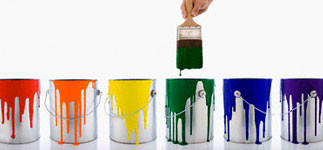| Kutch Minerals |

| Registration Date | 15 Jan 2018 |
| Revision Date | 15 Jan 2018 |
| Share |
Others Composites and Polymers
Rheology modifierClay
Al2O3 • 2SiO2 • 2H2O Nanoparticle /Nanopowder CAS Number : 1332-58-7Chemical Properties: Hectone Gellants are chemically neutral and their presence does not affect the pH of any organic liquid, The Hectare Gellants are resistant to the action of acids & alkalis in the working range of pH 4 to 10 and maintain gel stability over extended storage periods in this range. However, prolonged contact at lower or higher pH may cause decomposition of the Heclone Gellants with consequent reduction of gel strength. Physical Properties : Within the pH range 4 to 10, the Heclone Gellants are insoluble in all aqueous or organic liquids. A properly gelled Heclone compound, however, consists of particles in the micron range, so that a colloidal range is obtained in which no particles are discernible. The equilibrium moisture content of the Heclone products are about 3 % by weight and this amount of water is necessary for optimum gelling properties. Removal of this water distracts seriously from gelling efficiency. Once an Heclone compound has been gelled, it is stable in service up to moderately high temperatures short exposures to temperatures as high as 325° F has no effect. The dry Heclone particle is resistant to wetting by water, because of the layer of long hydrocarbon chains around each individual unit. Toxicological Properties : Normal precautions should be taken to prevent breathing the finely divided powder, as would be taken for any other inert materials. Studies undertaken seem to indicate that a comparably low order of toxicity should be expected.
The Heclone (Organoclay) products are finely divided, light creamy / brown coloured powder. Heclone have very low chemical reactivity and are readily stored and handled without difficulty. They are non-hygroscopic and do not loose effectiveness with storage.To form the gel, weigh about 10% diecfone /Gel -on. Select appropriate non-polar vehicle (90%) and place it under stirrer or in milling machine. Stir gently. Add gellant to vehicle slowly and then apply high shear for a couple of minutes. To aid dispersion, add 30-50% (this weight based on the gellant weight) Methanol (95/5). On addition of polar dispersant, the mass thickens to a gel. Continue milling or stirring for a few minutes to obtained thick, creamy, smooth gel. This gel can be incorporated in the dispersed paint system.
(Note: - the sample supplied is suitable for non-polar or medium polar organic solvents.)